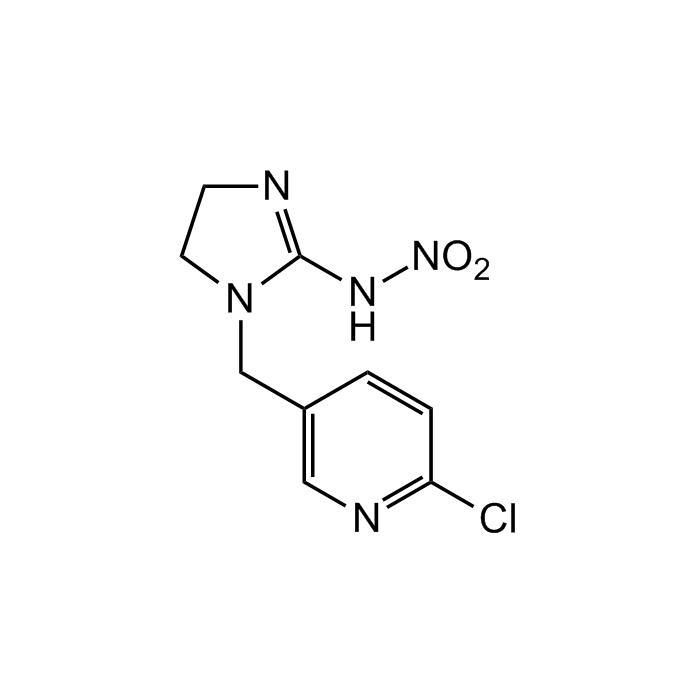Cookie Policy: This site uses cookies to improve your experience. You can find out more about our use of cookies in our Privacy Policy. By continuing to browse this site you agree to our use of cookies.
Chemodex
Imidacloprid

| Product Details | |
|---|---|
| Synonyms | 1-(6-Chlor-3-pyridinylmethyl)-N-nitroimidazolidin-2-ylidenamin |
| Product Type | Chemical |
| Properties | |
| Formula |
C9H10ClN5O2 |
| MW | 255.66 |
| CAS | 138261-41-3 |
| RTECS | NJ0560000 |
| Source/Host Chemicals | Synthetic |
| Purity Chemicals | EP |
| Appearance | White to off-white powder. |
| Solubility | Soluble in DMC (60mg/ml). Slightly soluble in DMSO or methanol. |
| Identity | Determined by 1H-NMR. |
| Declaration | Manufactured by Chemodex. |
| Other Product Data |
Click here for Original Manufacturer Product Datasheet |
| InChi Key | YWTYJOPNNQFBPC-UHFFFAOYSA-N |
| Smiles | ClC1=NC=C(CN2C(N[N+]([O-])=O)=NCC2)C=C1 |
| Shipping and Handling | |
| Shipping | AMBIENT |
| Short Term Storage | +4°C |
| Long Term Storage | -20°C |
| Handling Advice | Protect from light and moisture. |
| Use/Stability | Stable for at least 2 years after receipt when stored at -20°C. |
| Documents | |
| Product Specification Sheet | |
| Datasheet |
 Download PDF Download PDF |
Imidacloprid is a broad-spectrum neonicotinoid insecticide that is effective against sucking and biting insects and insects of the Coleopteran and Lepidoptera orders. It is an antagonist of the post-synaptic nicotinic receptors in the insect central nervous system, blocking acetylcholine at the post-synaptic membrane and impairing normal nerve function. It is an agonist of insect acetylcholine receptors (nAchRs) with Ki values of 1.9, 2.1, 290, and 50 nM for M. persicae and D. melanogaster receptors, rat brain membranes and rat recombinant receptors containing α4β2 subunits, respectively. In a mouse model of high-fat diet-induced obesity, imidacloprid increased body weight gain and adiposity and impairs glucose metabolism without increasing total food intake. Has been shown be to implicated in colony collapse disorder of honey bees. Can be used as a reference compound.
(1) A. Elbert, et al.; Pflanzenschutz-Nachrichten Bayer 44, 113 (1991) | (2) S. Kagabu, et al.; J. Med. Chem. 43, 5003 (2000) | (3) D.-S. Wang, et al.; J. Biol. Chem. 282, 16016 (2007) | (4) E. Zhang, & J.C. Nieh; J. Exp. Biol. 218, 3199 (2015) | (5) Q. Sun, et al.; J. Agric. Food Chem. 64, 9293 (2016)





